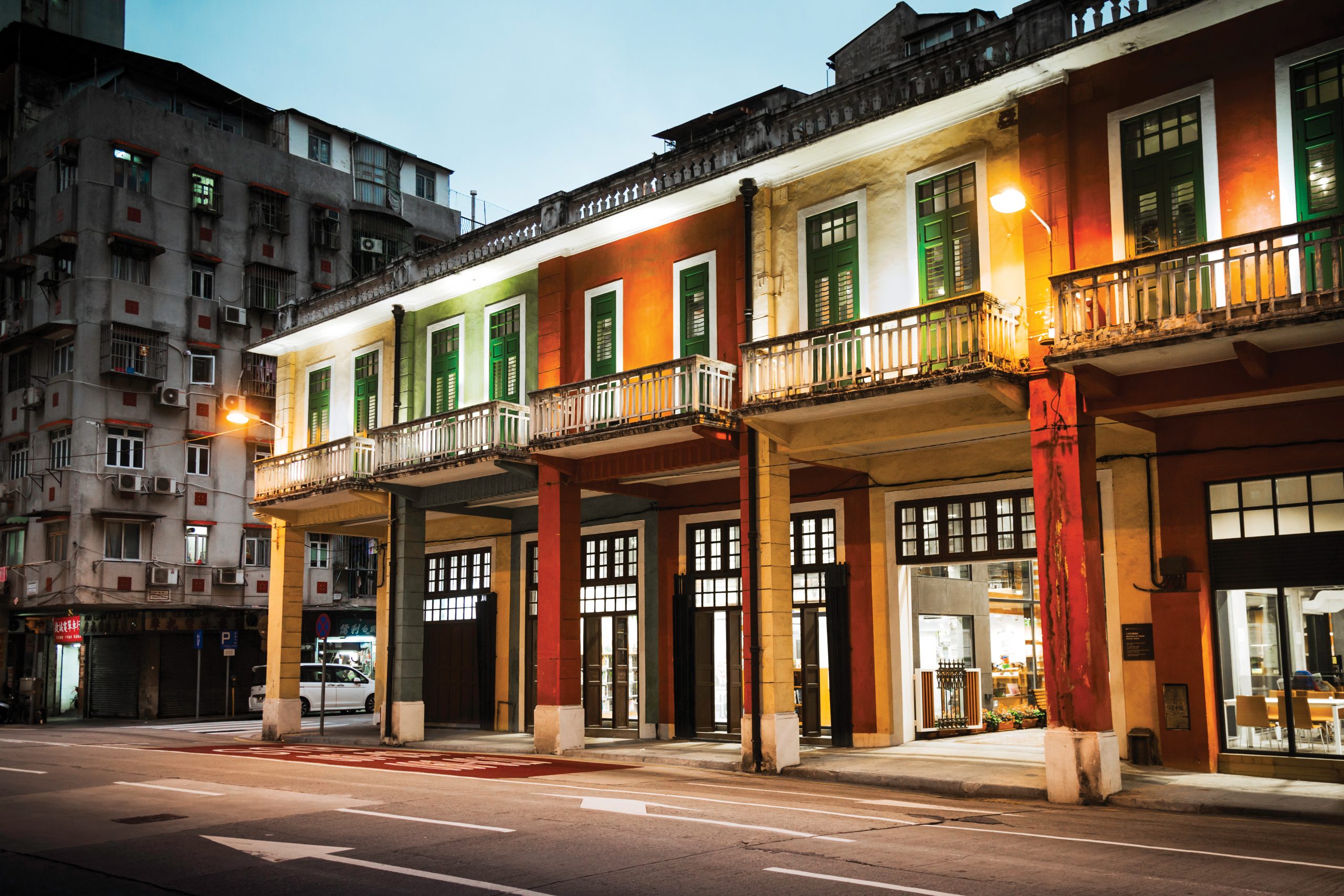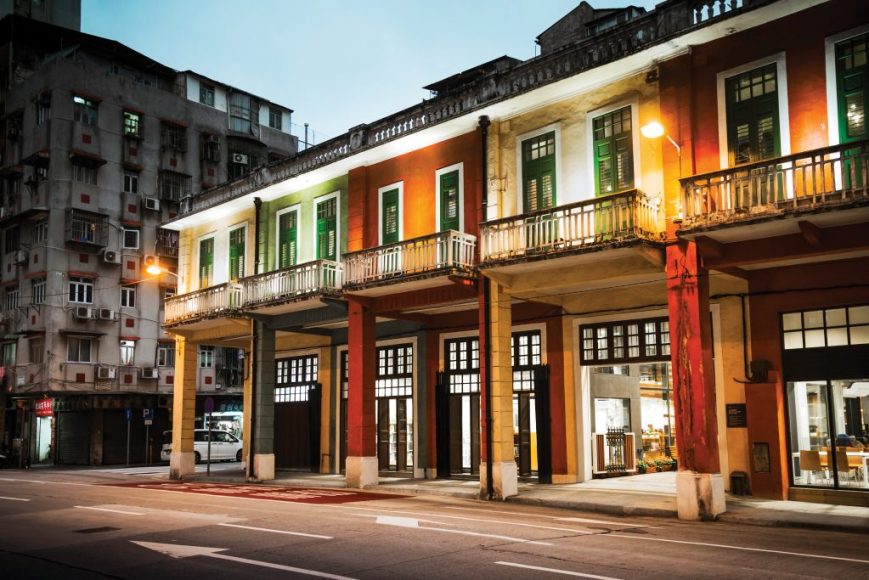Dying buildings become sparkling new library
On a crowded street in the Inner Harbour district, residents have discovered a pleasant surprise – a row of seven dilapidated buildings has been transformed into a sparkling new library. The Patane Library opened last 9th December at a ceremony presided over by Alexis Tam, Secretary for Social Affairs and Culture, and Ung Vai Meng, then President of the Cultural Affairs Bureau (IC). Since then, it has attracted around 700 visitors a day to enjoy its wide range of free newspapers, magazines, books, films, and music.
Built in the 1930s, the buildings were used as shops, selling timber to shipyards and piers that were then the heart of the city. But as the economy changed, the shops closed and the buildings were converted into overcrowded apartments for the poor. The property fell into such disrepair that in 2010, the owner, a real estate company, wanted to demolish them. The IC stepped in, proposing that the buildings be restored and converted into a library. It took six years and an investment of MOP26 million to revitalize the property, with an additional monthly rent of MOP165,000, eleven months a year paid to the real estate company over the next five years.
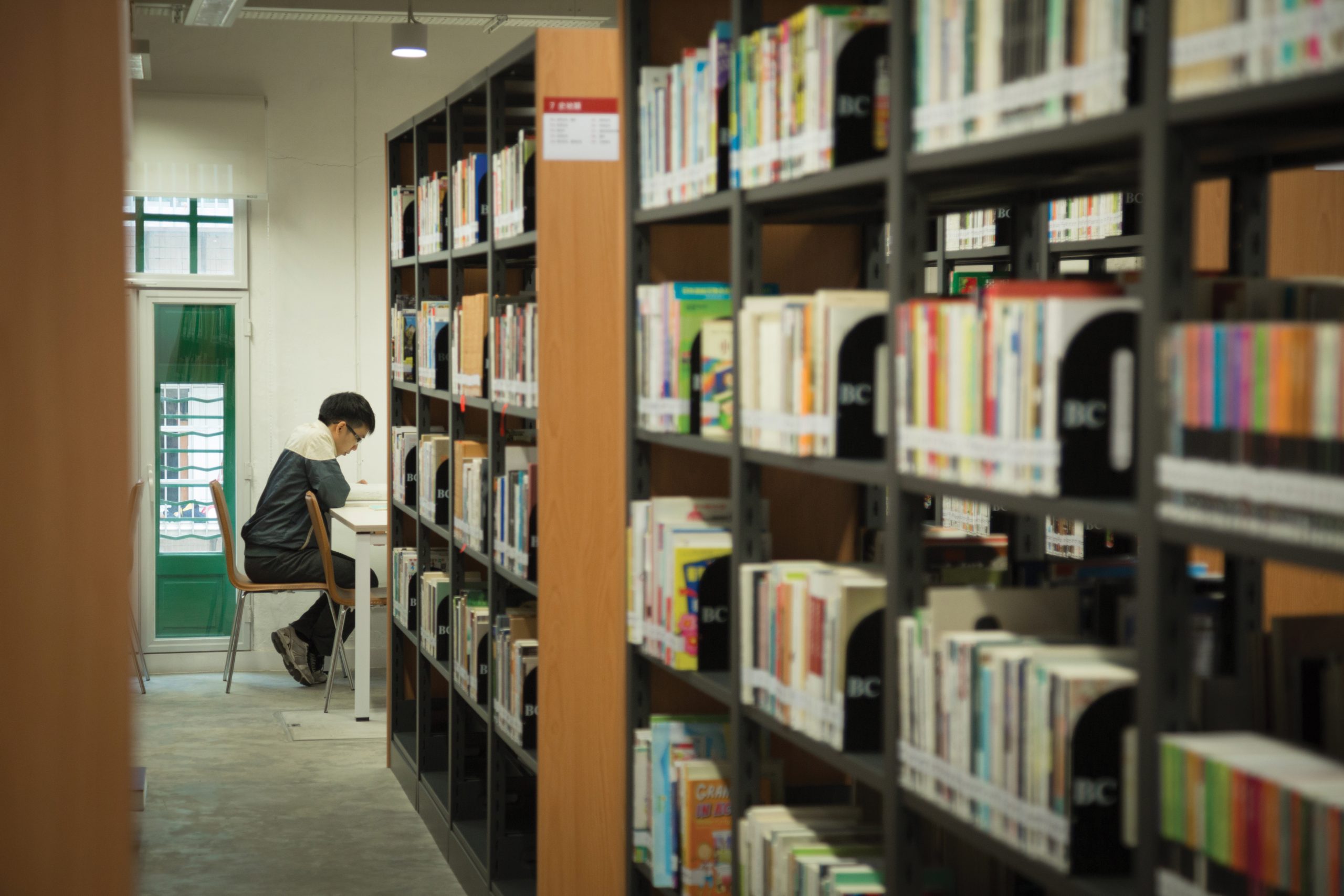
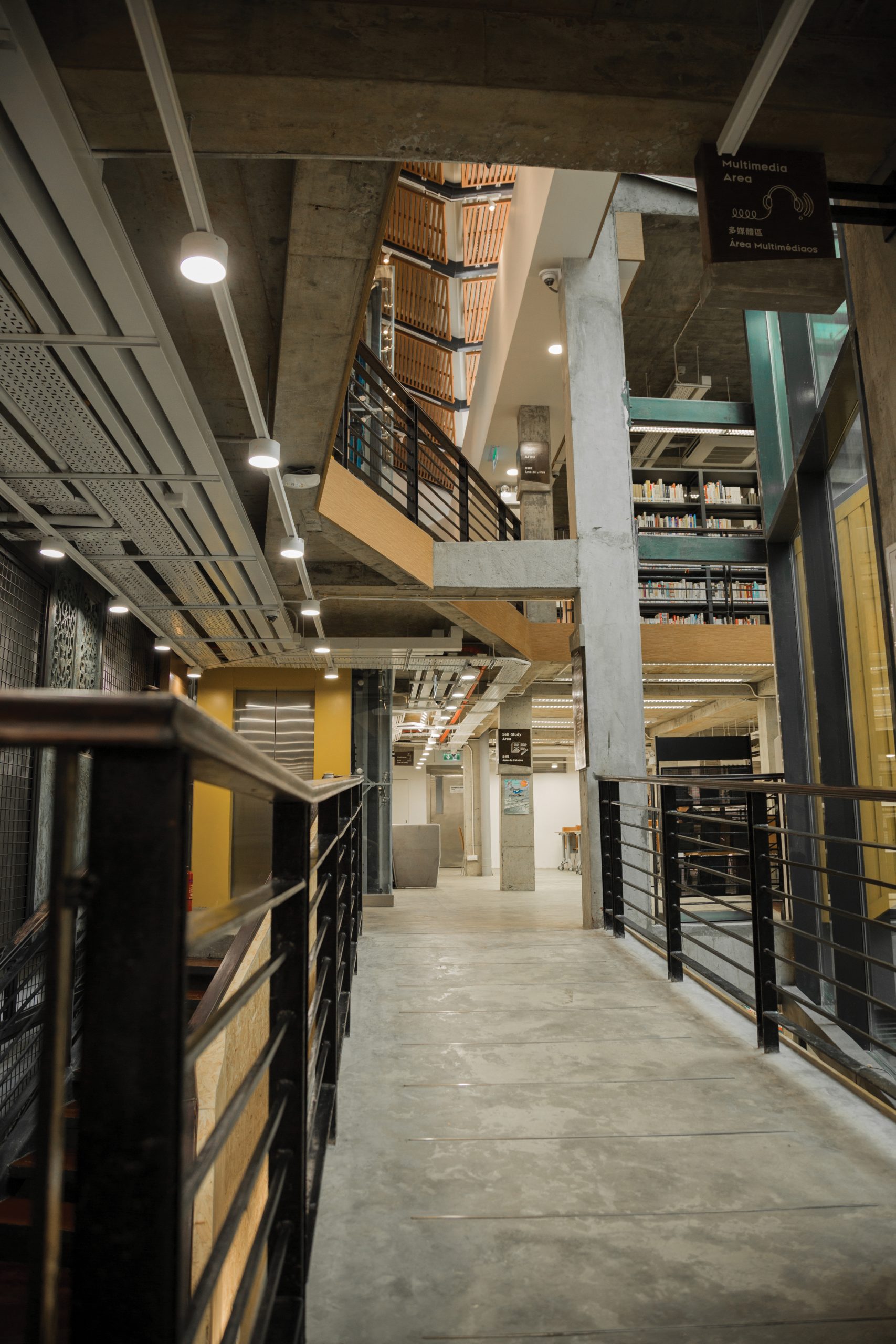
“Building on empty land is the easiest and costs less”, says Lam Kai Wun, an architect from the Division for Research and Planning of the IC’s Department of Cultural Heritage. “But there is nothing special about it. It has no story. This site is more valuable than a new building”, he adds.
“We kept the elements from the original buildings. The old residents say that they remember the old wood windows and doors. They have a feeling for this place and say that they used to live here. For each person, each room has a story and they remember it. The story goes on and, we hope, will be told from one generation to the next,” explains Lam.
Built in the 1930s, the buildings were used as shops, selling timber to shipyards and piers that were then the heart of the city… it fell into such disrepair that in 2010, the owner wanted to demolish them
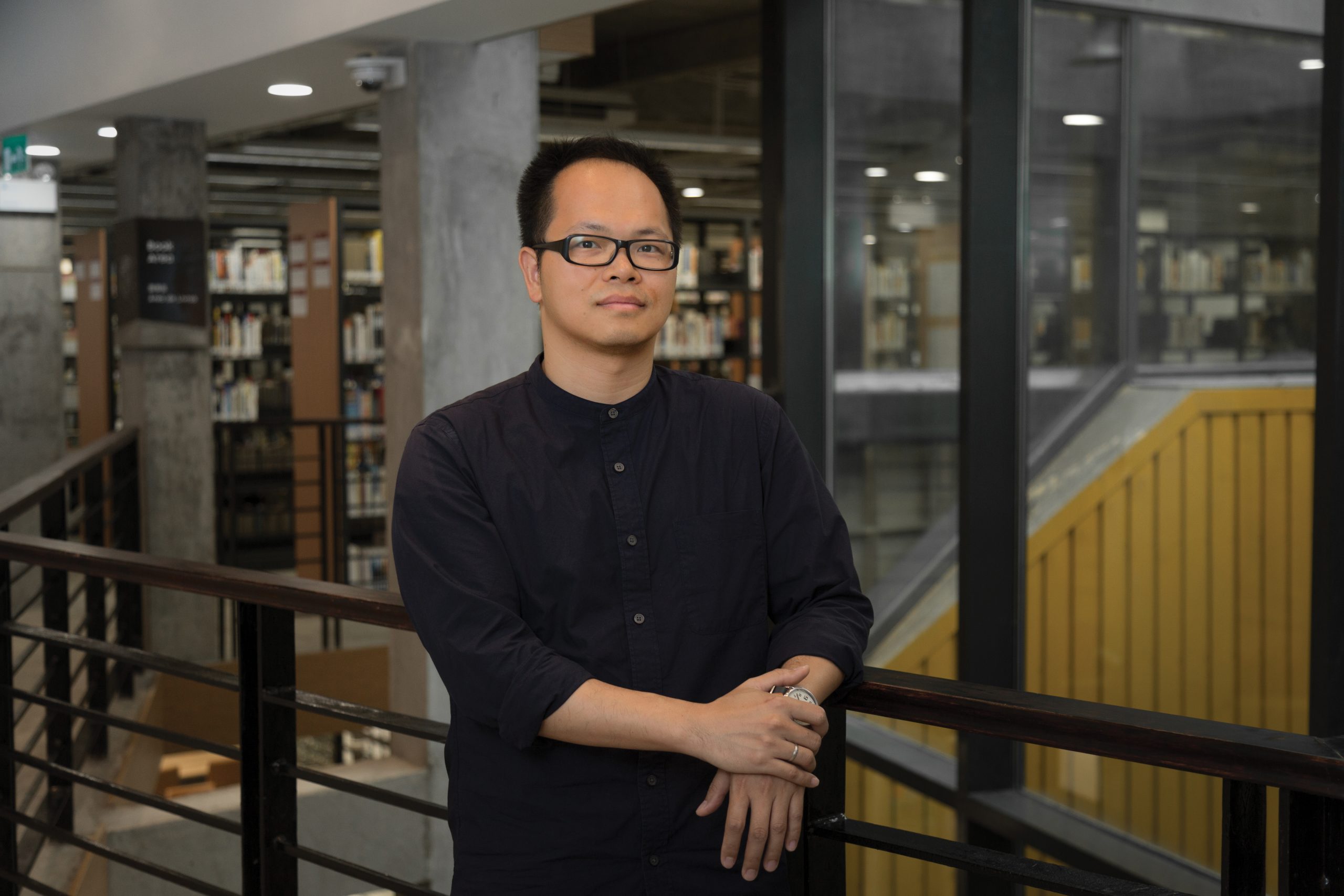
Timber to tenement
Built in the 1930s, the seven buildings on Rua da Ribeira do Patane combined European and Southeast Asian architectural styles. They housed timber merchants who sold their goods to the city’s booming shipyards located a short distance away in the Inner Harbour. It was the business centre of the city, where passenger and cargo ships arrived from Hong Kong and the mainland, and where fishing vessels set out to sea. The street bustled with people and clients for the timber.
The exterior of the buildings reflected a style common across southern China with a covering over the pavement that provided protection for pedestrians from both rain and the scorching summer sun. Inside, each building was comprised of a shop on the ground floor, stocks on the top floor, and living quarters for the merchant and their family on the first floor.
Over time, the economy of Macao changed. As the mainland developed its own shipyards, Macao could no longer compete in terms of price of land and labour. Production moved to port cities in Guangdong. As their sales dwindled, the timber merchants were forced to shut down. Consumer traffic diminished as well with the emergence of Avenida de Almeida Ribeiro as the city’s commercial centre, full of new shops, banks, hotels, and restaurants.

Retain the old, create the new
The poor condition of the buildings complicated the restoration process. “Our principle was to preserve the whole façade,” says Lam. The first job was to clear out all the waste and additional structures put in by the new residents. “We needed 25–30 rubbish trucks to remove everything. Only then could we see the original state of the buildings.”
Since the buildings stand on reclaimed land, there had been slippage in some places during the long period of neglect. So Lam and his team repaired the severely damaged areas, and reinforced the foundations. They built a new roof using glass and steel frames, and demolished the walls that separated the seven buildings to create a single unit. Old wood windows and doors from each wall were retained, and a portion preserved for visitors to see.
To accommodate the collection of books and audiovisual materials, the team built a new structure in three of the shops capable of supporting such a massive weight. They also added a lift, to move books and people, and modern drainage and fire prevention systems.
The new glass front allows passersby to see what is inside, and encourages them to come in. To make it even more inviting, Lam placed two benches at the entrance where people can sit, and sip a coffee or eat a snack. Inside they reproduced the original paint scheme, and hung some of the original shutters on one wall, a feature popular with elderly residents.
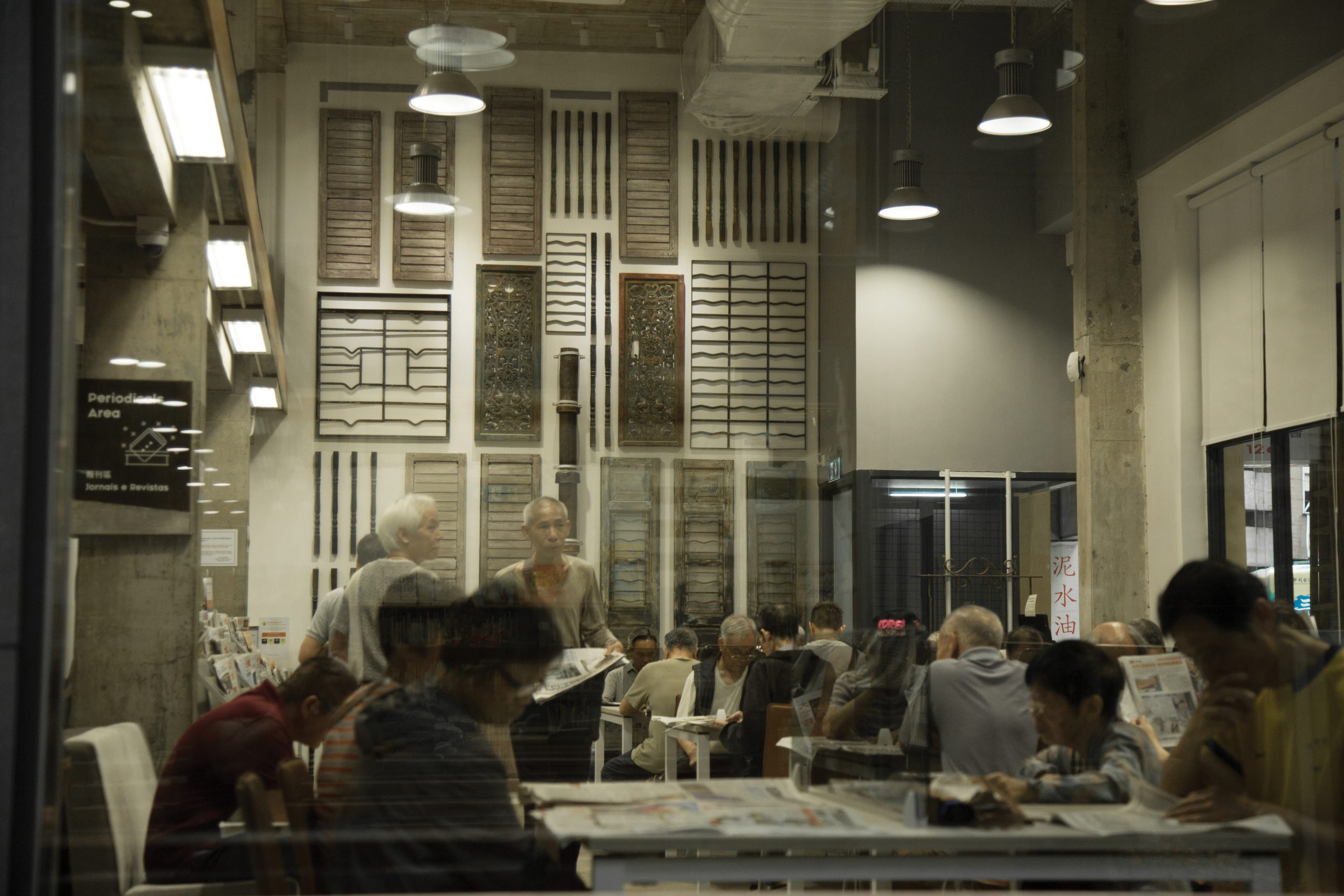



A new centre for the community
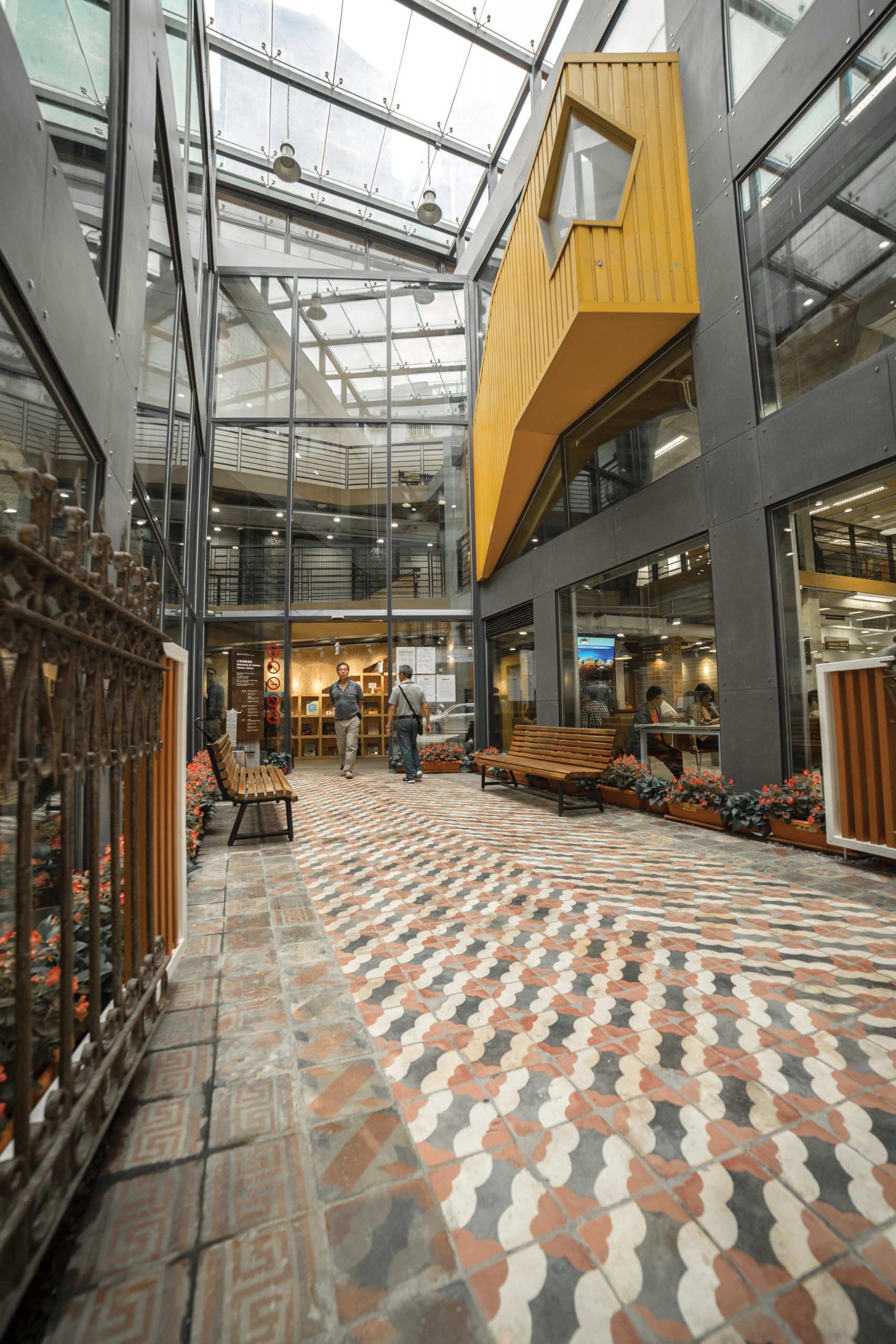
Why build a library and not a museum or another kind of public facility? To meet demand. According to Lo Chi Keong, Chief of Division of Reader Services and Promotion of the IC’s Department of Public Library Management, the city’s 17 public libraries drew 2.5 million visitors last year.
“Our aim is to have one within 5–10 minutes walking distance of every resident. In July 2012, we opened a small one nearby, the Red Market Library,” he says. A former branch of the Post Office, the 260 square metre facility has seating for 73, as well as eight computers and a collection of 7,100 books, mainly on home economics. Although it is open 24 hours a day, the Red Market Library does not have library officials on duty after 8 pm.
“But the Red Market Library is too small. The area needed a larger one and the residents were asking for one. Each district needs a cultural centre, and this one is a historic building that deserves to be preserved. Each library needs its own special features. The Patane Library specialises in drama and music,” Lo explains.
The Patane Library consists of three floors, covering an area of 1,130 square metres, with 170 seats for readers, as well as space to read the 79 newspapers and 643 magazines
The Patane Library consists of three floors, covering an area of 1,130 square metres, with 170 seats for readers, as well as space to read the 79 newspapers and 643 magazines. The periodicals come from all over the world, including the mainland, Taiwan, Singapore, Europe, and the United States. The collection also boasts 14,000 books and 4,100 audiovisual materials. It has a multi‑media zone to show films and concerts, as well as a room for meetings and school projects.
“Since it opened, we have attracted a wide range of people,” says Lo. “In the morning, elderly people queue up for the opening at 9:30 to read newspapers and magazines. During the lunch break, we have white‑collar people coming from their offices. After the end of class, students come from the schools. Parents come in with their children. We have activities for children, as well as for adults. Presentations from publishers and authors have been especially popular. Readers can access both traditional and electronic books, and order books from other libraries.”
Ten years ago, the derelict buildings that now comprise the Patane Library were something to avoid. Now the IC has transformed them into a social and cultural centre in the Patane district, and a prime example of how to combine the past and the present.

